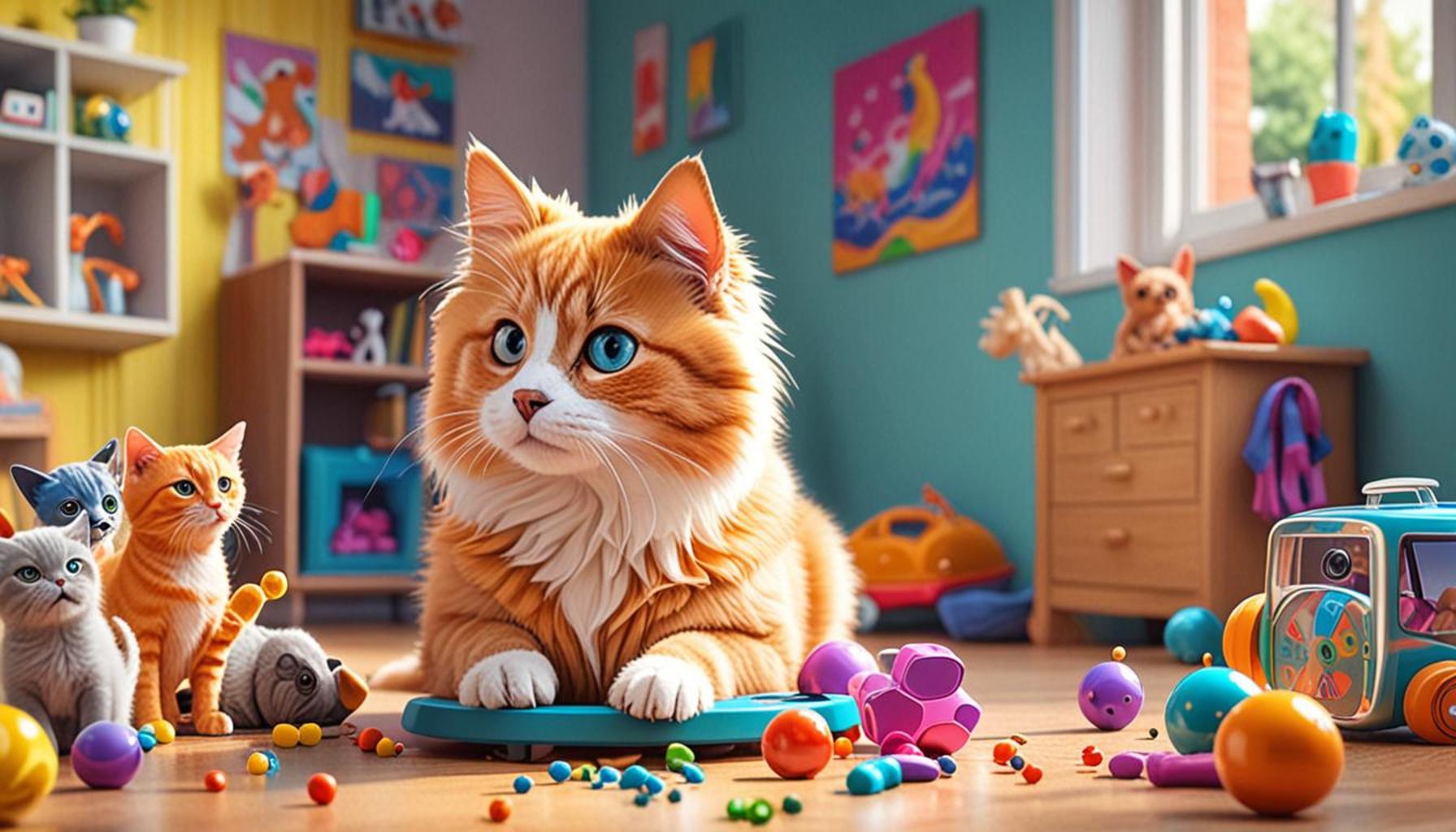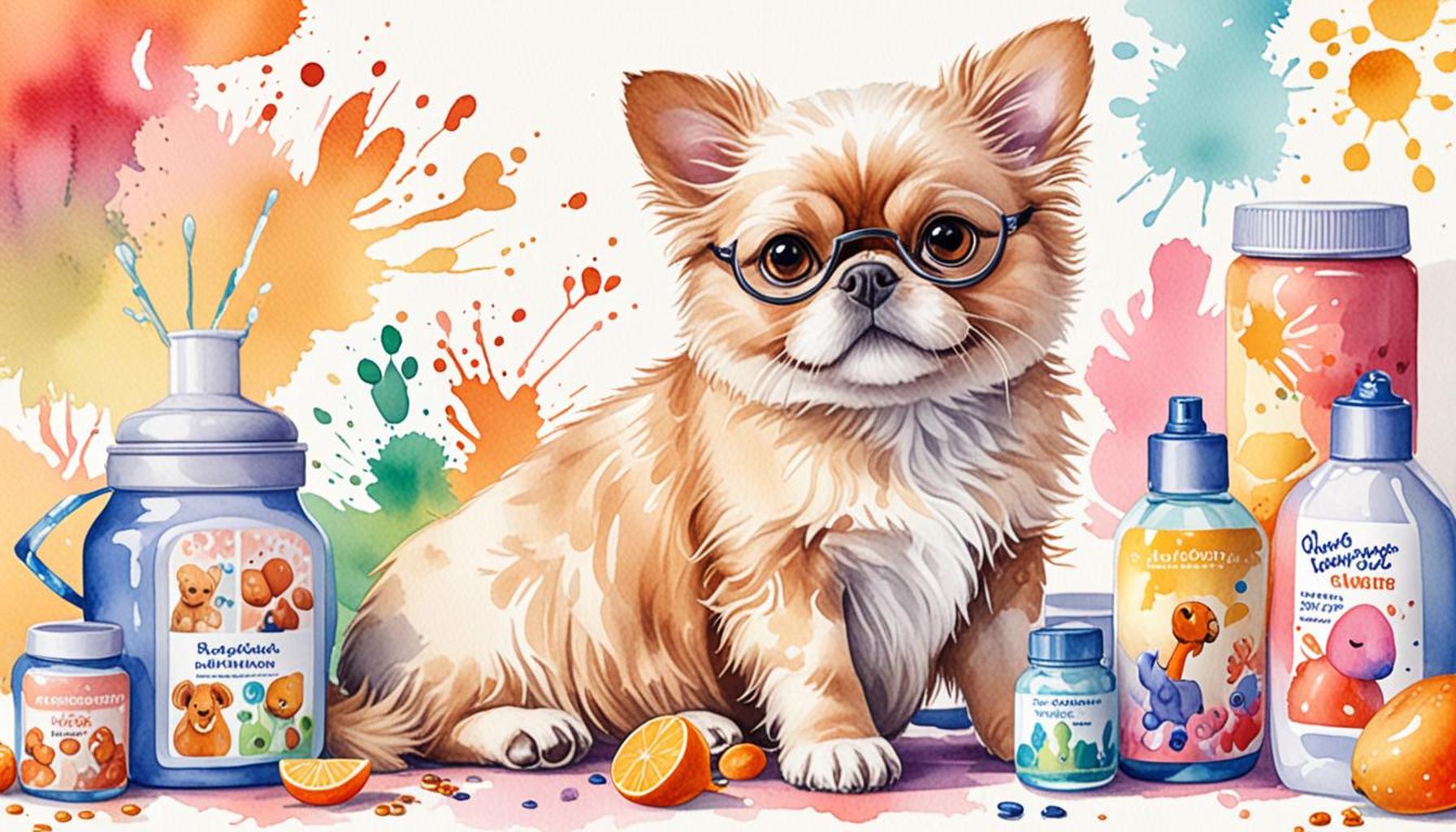The impacts of interactive toys on pet behavior

The Benefits of Interactive Toys for Pets
In the ever-evolving landscape of pet care, interactive toys have surged in popularity among pet owners who seek to provide more than just traditional playtime. These innovative products are designed to engage pets on multiple levels, enhancing their mental, emotional, and physical well-being. The advantages they offer go beyond simple entertainment, leading to lasting changes in pet behavior and fostering healthier relationships between pets and their owners.
Research shows that interactive toys can significantly enhance various dimensions of pet behavior. One of the primary benefits is the improvement of cognitive skills. Toys that challenge pets mentally, such as puzzle feeders that require problem-solving to release treats, can enhance a pet’s ability to think critically and adapt to new challenges. For instance, a dog faced with a puzzle toy that dispenses treats when solved will engage more actively, fostering not just fun but essential thinking skills.
Another crucial benefit is the reduction of anxiety. Pets often face various stressors, from separation anxiety when their owners leave the house to changes in their environment. Engaging with interactive toys can distract animals from these stressors, providing a healthy outlet for their energy and helping to lower anxiety levels. For example, a cat may find solace in a feather chaser toy that keeps them busy, thus alleviating feelings of loneliness.
Moreover, many interactive toys promote increased physical activity. Toys that require pets to move, chase, or jump can help combat obesity, a growing issue in the United States where an estimated 56% of dogs and 60% of cats are classified as overweight or obese. Engaging a pet in play can be as simple as using an automatic laser pointer that encourages the pet to run and chase, providing essential exercise.
These toys also play a vital role in fostering a deeper bond between pets and their owners. As pets engage with interactive toys independently, they showcase their unique preferences and personalities. This behavior allows owners to better understand their furry companions and tailor play experiences accordingly. By observing which toys spark their pets’ interest, owners can develop a more personalized approach to playtime.

With a wide variety of options available in pet stores and online, understanding how these toys influence pet behavior invites a fascinating exploration of animal psychology, engagement, and the dynamic role owners play. As the pet care industry continues to expand, investing in quality interactive toys not only entertains but enriches the lives of pets and their families.
DIVE IN: Click here to discover how technology is reshaping pet supplies
Engagement and Cognitive Development
Many pet owners are unaware that the key to unlocking a pet’s full potential often lies in something as simple as an interactive toy. These toys have been shown to have profound effects on enhancing not just physical play, but also cognitive engagement. By stimulating a pet’s brain, interactive toys contribute significantly to their overall intelligence, enabling pets to think more critically and solve challenges. For example, toys that require pets to push, pull, and manipulate components to receive a reward have become increasingly popular among dog owners. Such engagement can turn playtime into brain training, providing benefits akin to those derived from puzzle games for humans.
Additionally, the importance of mental stimulation cannot be overstated. A well-stimulated mind leads to healthier behavioral expressions. Without it, pets may develop undesirable habits such as excessive barking, chewing, or digging. An interactive toy that encourages problem-solving skills can help alleviate boredom and redirect this energy into constructive behavior. According to a study by the American Veterinary Medical Association, pets who engage in mentally stimulating activities are 30% less prone to developing behavioral issues compared to their less-stimulated counterparts.
Emotional Benefits and Behavior Modification
Incorporating interactive toys into a pet’s routine is also a savvy approach to addressing emotional well-being. Consider how both dogs and cats exhibit signs of stress when left alone or when their environment changes. Interactive toys serve as more than just distractions; they can effectively provide comfort and reassurance. For instance, a dog left alone during the day may find solace in a chewing toy that rewards them with treats, thereby mitigating their feelings of anxiety. Similar trends can be observed in cats who show interest in chase and pounce toys, reducing their stress levels by mimicking the behavior of hunting.
Here are some key emotional benefits of using interactive toys:
- Alleviation of Separation Anxiety: Pets can focus on engaging with toys, reducing their tendency to be distressed when left alone.
- Improved Mood: Interactive play can boost serotonin levels, resulting in happier and more relaxed pets.
- Social Skills Enhancement: Multi-pet households can benefit from toys that require cooperation, fostering improved interaction among pets.
The impact of interactive toys goes beyond the immediate play experience; they engage pets on a deeper level, catering to both their mental and emotional needs. By investing in tools that promote cognitive development and emotional well-being, pet owners are not just providing entertainment – they are laying the groundwork for well-rounded, behaviorally balanced pets. In exploring such innovations in pet care, it becomes clear that interactive toys could be a pivotal element in nurturing a stable and fulfilling domestic life for our furry companions.
Interactive toys have rapidly transformed the way pet owners engage with their furry companions. These innovative playthings do not only provide entertainment but are also designed to stimulate mental and physical activity. When considering the impacts of interactive toys on pet behavior, several key aspects emerge. Firstly, interactive toys can significantly decrease feelings of boredom. Pets, especially dogs and cats left unsupervised, may develop destructive behaviors if they lack stimulation. These toys keep them occupied for longer periods, reducing the likelihood of them engaging in activities that could lead to damage around the house. By providing an engaging outlet, pets become less anxious and more well-adjusted. Moreover, the chance for cognitive development is inherent in interactive toys. Many products on the market require pets to solve puzzles or navigate obstacles to receive a reward, such as a treat. Engaging in these problem-solving tasks can enhance cognitive skills and promote a healthier mind, which is essential as pets age. This increase in mental agility could lead to better overall behavior and social interaction with both humans and other pets.Here is a comprehensive table that illustrates various categories of advantages associated with interactive toys and their implications for pet behavior:
| Category | Key Features |
|---|---|
| Engagement | Keeps pets occupied, reducing destructive behavior. |
| Cognitive Development | Enhances problem-solving skills, promoting mental agility. |
| Physical Activity | Encourages movement, which helps maintain a healthy weight. |
As the utilization of interactive toys continues to grow, more pet owners are realizing that investing time and resources into engaging gadgets can lead to a profound improvement in their pet’s behavior. By focusing on mental and physical stimulation, these toys pave the way for a happier and healthier pet, allowing for stronger bonds between pets and their owners. This emerging trend in pet care is one that may prompt further exploration into the psychological benefits of play.
DISCOVER MORE: Click here to learn how to incorporate obedience training into your daily routine</
Fostering Physical Activity and Health
Another significant impact of interactive toys is their ability to promote physical exercise. In a world where pets can often lead sedentary lives, especially in urban environments, interactive toys present an opportunity to integrate movement into their day. For instance, toys designed for fetching or those that encourage jumping can help keep pets active, promoting heart health, weight management, and overall physical fitness. According to the Association for Pet Obesity Prevention, more than 50% of dogs in the United States are classified as overweight or obese, leading to a multitude of health issues. Engaging pets in active play not only combats obesity but also contributes to a healthier lifestyle.
Moreover, many interactive toys leverage technology to create dynamic play experiences. For example, automated laser pointers and rotating toys attract cats’ attention, satisfying their natural instincts to chase and pounce. This kind of active engagement can be crucial in managing a cat’s energy levels, reducing the likelihood of destructive behaviors that often arise from boredom or pent-up excitement. Studies have shown that cats who engage in regular active play can exhibit improved agility and coordination, enhancing their overall wellbeing.
Socialization and Behavioral Skills
Interactive toys also play a pivotal role in enhancing socialization skills among pets. In multi-pet households, toys designed for collaborative play encourage interaction that can lead to stronger social bonds. For example, toys that dispense treats when multiple pets interact with them can cultivate a sense of teamwork and cooperation. This social engagement can mitigate aggressive tendencies and promote an environment of harmony within the home.
Additionally, the social skills that pets develop through interactive play extend beyond their household. Dogs who are accustomed to interacting with toys that require negotiation and turn-taking may display improved manners when interacting with other dogs in public spaces, reducing the chances of confrontations. Similarly, cats that learn to share an interactive toy with their feline companions demonstrate enhanced confidence and adaptability in social scenarios.
Furthermore, research indicates that pets benefit emotionally and behaviorally from social play. A study conducted by the University of Veterinary Medicine found that dogs exposed to interactive toys during play sessions showed decreased signs of aggression and anxiety, suggesting that the benefits of shared playtime extend into real-life interactions. This underscores the importance of selecting and utilizing interactive toys in a manner that encourages positive social behaviors.
In understanding how interactive toys influence pet behavior, it becomes clear that they serve multiple purposes – promoting physical activity, enhancing cognitive engagement, and fostering social skills, all of which culminate in improving a pet’s overall well-being. As the pet industry continues to evolve, the focus on interactive toys reflects a growing awareness of the complex needs pets have, ensuring they lead enriched and balanced lives. This intricate relationship between play and behavior not only supports a pet’s physical health but also contributes profoundly to their emotional and social development.
DISCOVER MORE: Click here to learn how agility training can benefit your pet
Conclusion: A New Era of Pet Engagement
The exploration of interactive toys reveals their transformative influence on pet behavior, offering numerous benefits that extend across physical, emotional, and social dimensions. By promoting physical activity, these toys serve as a vital tool in combating health issues such as obesity, a challenge faced by over 50% of dogs in the United States. This engagement not only supports cardiovascular health but also enhances the overall vitality of pets, allowing them to lead happier, more active lives.
Moreover, the role of interactive toys in fostering socialization skills is equally compelling. In multi-pet households, these toys create opportunities for collaborative play, improving bonds among pets and decreasing aggressive tendencies. Ultimately, pets that learn to interact positively with one another through play are likely to exhibit better manners and reduced anxiety, facilitating smoother interactions with other pets and humans alike.
As we consider the scope of pet care, the insights shared underline the importance of integrating interactive toys into our pets’ routines. These tools are not merely entertainment; they are essential for enriching our pets’ lives, fulfilling their natural instincts, and providing mental stimulation that is often overlooked. The pet industry continues to innovate, and pet owners are encouraged to seek out options that not only challenge their furry companions but also enhance their overall well-being.
In conclusion, the impacts of interactive toys on pet behavior are profound, revealing a path towards healthier, happier, and well-adjusted pets. As responsible owners, we must prioritize these resources to ensure our pets thrive in a world that demands more from them than simply companionship. By embracing this new era of engaging play, we enrich our pets’ lives and deepen our own connections with them.


